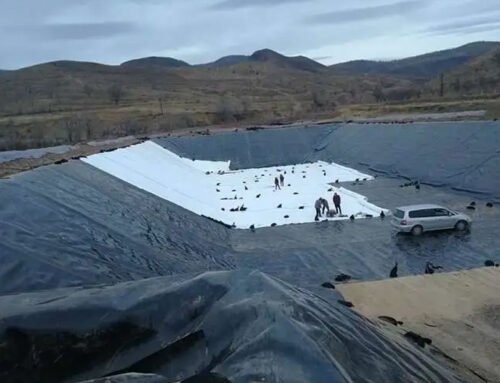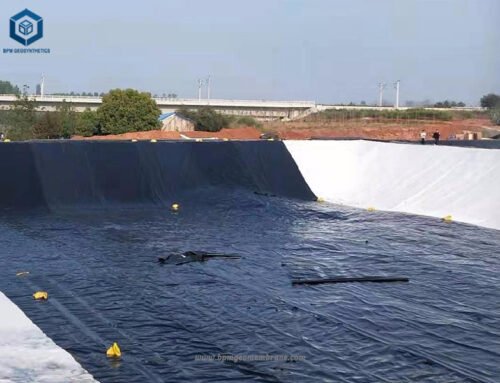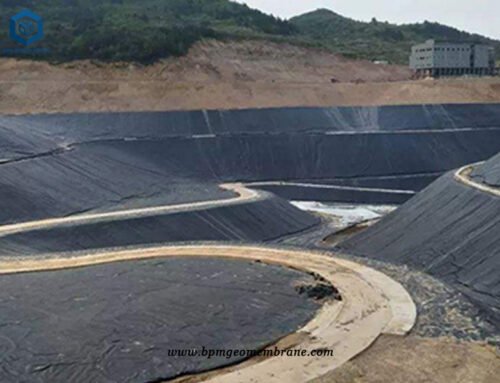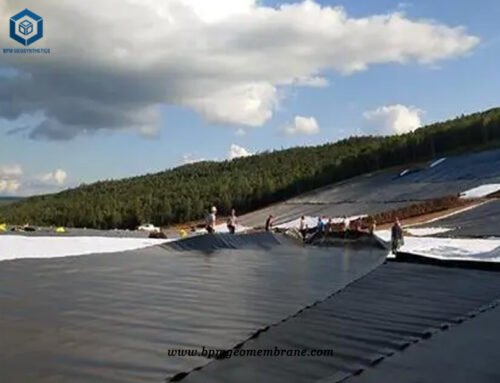HDPE lining material is also known as HDPE geomembrane liner. The main materials of HDPE lining material include polyethylene, polypropylene and other synthetic materials. Geomembranes with different thicknesses can be selected according to different usage requirements. When choosing HDPE lining material, you should choose a suitable product according to the specific conditions of the mine, and ensure that the product can meet the anti-seepage and other chemical or chemical performance requirements.
Ghana, located in western Africa, is famous for its abundant gold resources. Ghana is one of the countries with the largest gold production in Africa, and its gold mining industry occupies an important position in the national economy. Ghana has abundant gold reserves, mainly distributed in areas such as Ashanti District, Obuaxi District, and Akapu District, among which the gold production in Ashanti District has a significant impact on the global gold mining industry. The project of using BPM geomembrane in the tailings of gold mines in Ghana is located in the Asanti District of Ghana.
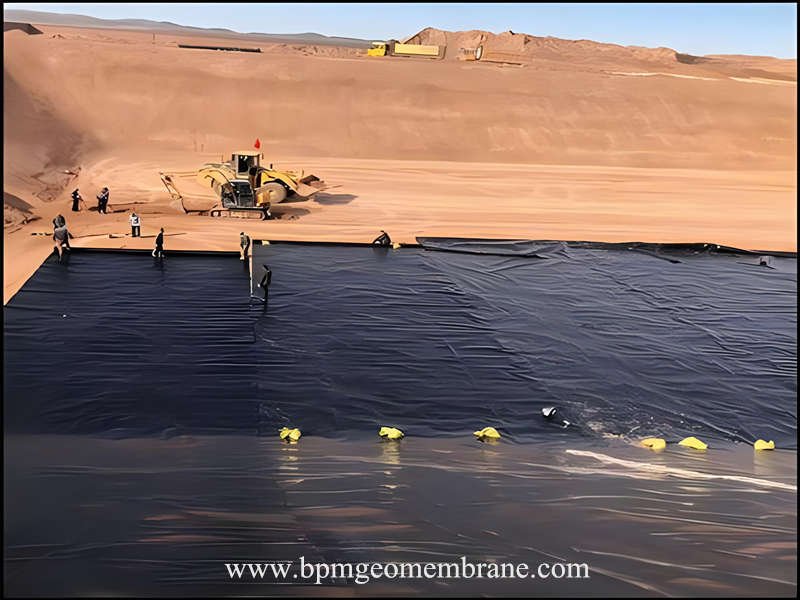
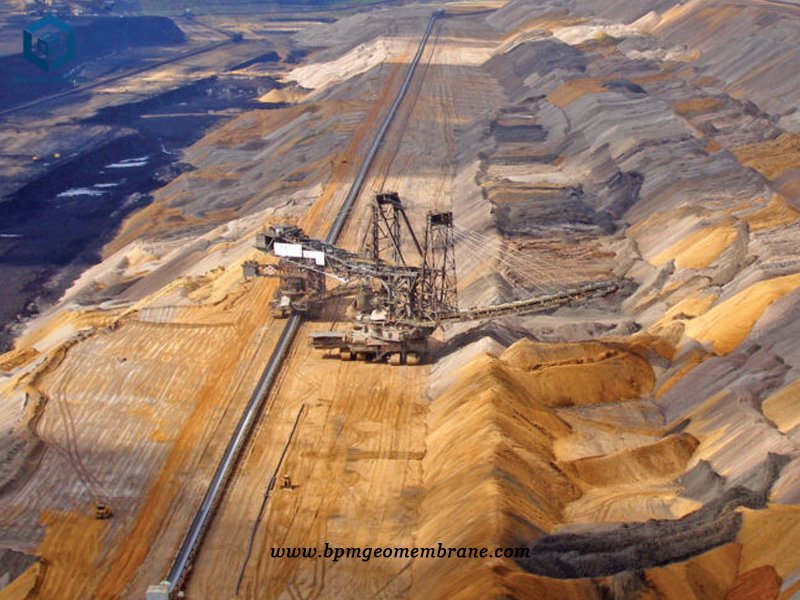
The process of Ghanaian customers making decisions to use geomembranes
Tailings treatment has become an important task in a gold mining project in Ghana. With the progress of gold mining, the stacking of tailings has become a problem that needs to be solved. Tailings not only occupy a large amount of land, but may also pose potential threats to the environment, such as soil and water pollution. Therefore, the project management team has decided to find an effective way to address and prevent the adverse effects of tailings.
In the decision-making process, the project team considered various options, including traditional tailings stacking and the use of modern environmentally friendly materials for tailings treatment. After thorough research and discussion, the team has decided to use HDPE lining material as the core component of the tailings treatment plan. Geomembranes have significant advantages in preventing tailings leakage and reducing environmental risks due to their excellent impermeability, corrosion resistance, and environmental performance. Ghana’s client tailings project has always used European brand geomembranes. Due to the global economic downturn caused by the pandemic, in order to reduce the cost of engineering project use, Ghana Mining Company has had to choose a new HDPE lining material production enterprise with advantages in price and quality. After six months of sample testing, BPM geomembrane has perfectly met customer quality requirements.
HDPE lining material is a type of impermeable film made of high-density polyethylene (HDPE) and other materials, which has excellent impermeability performance. During the tailings treatment process, geomembranes are used as impermeable layers, laid at the bottom and sides of the tailings accumulation area to isolate the tailings from groundwater and soil, and prevent the leakage and diffusion of harmful substances. The main functions of geomembranes include:
- Prevention of leakage: Geomembranes have very low permeability and can effectively prevent harmful substances in tailings from leaking into groundwater and soil, thereby avoiding pollution of groundwater resources.
- Stable tailings accumulation: The laying of geomembrane can enhance the stability of tailings accumulation and prevent unstable phenomena such as landslides or collapses.
- Reducing environmental risks: By using geomembranes, it is possible to significantly reduce the risk to the surrounding environment during tailings treatment and protect the local ecological environment.
- Improving resource utilization: Reasonable use of geomembranes can recover valuable substances from tailings and improve resource utilization.
Overall, HDPE lining material plays a crucial role in tailings treatment, as it is an efficient and reliable anti-seepage technology that is of great significance for protecting the environment, maintaining ecological balance, and improving the safety and sustainability of tailings treatment. However, in practical applications, it is necessary to choose the appropriate type and thickness of geomembrane based on the situation of different mines to ensure the effectiveness and stability of tailings treatment engineering.
Selection of geomembrane thickness
After engineering research and on-site investigation, the team ultimately decided to use a 2.0mm thick geomembrane in the tailings treatment of the gold mine project. This decision is based on a comprehensive consideration of on-site geological conditions, tailings properties, and geomembrane performance. A 2.0mm thick geomembrane has sufficient impermeability to effectively isolate tailings from the surrounding environment and reduce environmental risks. In addition, this thickness of geomembrane also has good durability and stability in long-term use, which can meet the continuous operational needs of the project. In order to reduce the workload of geomembrane welding, BMP produces 8m * 105m sized geomembranes for customers, minimizing their welding hours and time. A total of 102 rolls of geomembrane were used for the entire project of 85680 square meters.


Specifications of HDPE Lining Material for Gold Tailing Project in Ghana
- Thickness: 2.0mm
- Quality Standard :ASTM GRI GM 13
- Geomembrane Size:8x105m
- Quantity for the Project : 85,680 square meters
Application of Geomembrane Lining Material in Gold Mine Tailings Projects
The application of geomembrane in gold mine tailings projects involves multiple aspects:
Tailings isolation layer: Geomembrane is applied at the bottom of the tailings stacking area to form an impermeable layer, effectively isolating the contact between tailings and groundwater and soil, and preventing environmental pollution caused by tailings leakage.
Anti seepage Embankments: Geomembranes can also be used to construct anti seepage embankments in tailings storage areas to prevent tailings overflow or leakage, and to protect surrounding water resources and ecological environment.
Drainage system: Geomembranes can be combined with drainage systems to collect, treat, and utilize the water seepage from tailings, reducing waste and environmental impact.
Environmental benefits: The use of geomembranes can reduce environmental risks during tailings treatment, reduce land occupation and water pollution, in line with the concept of sustainable development, and also help enhance the social image and sustainability of gold mining projects.
In summary, the application of geomembrane linng Material in Ghana’s gold mine tailings project is a typical environmental protection measure, which not only effectively solves the problem of tailings treatment, but also protects the local environment and water resources, promoting the sustainable development of the gold mine industry. This case also provides useful experience and reference for other similar projects.
About BPM
BPM has been specializing in delivering complete line of geosynthetics products and solutions to worldwide customers since its foundation in 2007. BPM had provided many types of effective and state of the art geomembranes, geotextiles, geocells, geosynthetic clay liners (GCLs), drainage boards, geogrids to over 81 countries. Our main customers are from Australia, France, Sweden, UK, Hong Kong, Hungary, New Zealand, Poland, Mexico, Ecuador, Brazil, Pakistan, Bangladesh, Thailand, Vietnam, Malaysia, Indonesia, Singapore, Philippines, Sri Lanka, India, UAE, Saudi Arabia, Qatar, Kenya, Ghana, Ethiopia, Somalia, Nigeria, South Africa, Swaziland, Mongolia, etc.
BPM is not only manufacturing best quality geosynthetic products but also providing professional design and installation service. OEM, ODM, custom development and fabrication are also available. If you have any questions or inquiries, please fill and submit the following form, we will reply as soon as possible.

